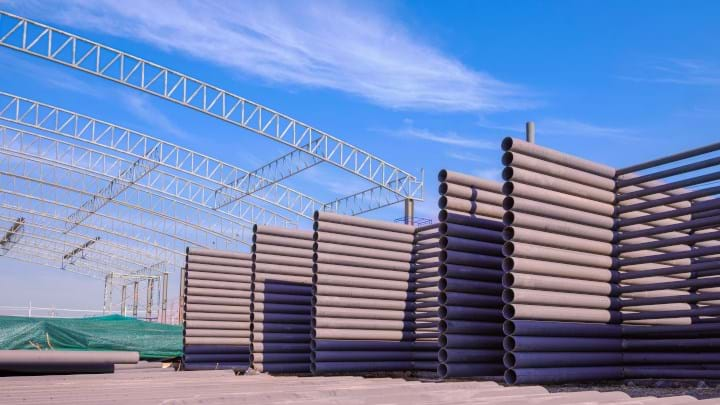Australian industry calls for government to ‘act soon’ on green metals production

AUSTRALIA’S energy and mining industry leaders have called for the government to “act soon” on its goal to become a world-leading green metals producer.
As part of its Future Made in Australia bill, which aims to speed up the country’s path to net zero, the government launched a green metals consultation outlining the potential of increasing steel production using renewable sources.
The paper reports that green metals could generate around A$122bn/y (US$80bn) to the Australian economy by 2040.
The Clean Energy Council and iron ore developer Magnetite Mines are among those welcoming the plans, but warned “time is running out” for the government to take advantage of Australia’s abundant renewable energy resources.
Magnetite Mines said in its consultation response: “Australia must act soon because time is running out. The global steel industry has a carbon problem due to it being responsible for contributing 8% of the world’s carbon emissions.”
It added: “Australia has comparative advantages, relative to its key trading partners, to produce green iron, presenting an enormous manufacturing and export market opportunity.”
Australia's advantages
Australia is one of the largest producers of iron ore, bauxite, and alumina in the world, with the government expecting it to become the largest producer of high purity alumina by 2025.
The metals are essential components in the development of steel, and though Australia is a major producer of metals, it only ranks at 28th in global steel production, with China and India leading the way.
Demand for low-carbon green steel is expected to increase to more than 200m t by 2030, accounting for more than 10% of future steel demand, according to consulting firm McKinsey.
Due to its “abundant” reserves, the government said Australia has proven to be an attractive destination for companies investing in green metals.
Last year, Rio Tinto and Sumitomo Corporation announced a project to produce hydrogen for process heating at Rio Tinto’s Yarwun alumina refinery, based in Queensland. The project is estimated to be worth A$111m.
To incentivise production, the government has committed A$8bn over the decade towards renewable hydrogen production, and A$1.7bn towards technologies linked to green metals.
Large capital investment is needed
Despite the potential of green steel production, industry leaders have pointed out that major development and legislative improvements need to be made to facilitate the market.
The Heavy Industry Low-Carbon Transition Cooperative Research Centre (HILT CRC), whose industry partners include Liberty Steel and Calix, told The Australian that Australia will need to attract international investment for green iron/steel production to be competitive. It also recommended that investment into R&D was needed to develop and derisk renewable technologies.
HILT CRC’s response to the consultation stated: “HILT proposes that the fastest, least cost and least risk way to develop these facilities is if they are coordinated nationally (and internationally) and involve industry, research, and government working collaboratively.”
Universities Australia, which represents 39 universities in the country, echoed the recommendation, saying that research for the Future Made in Australia scheme was “central to its success”.
Its submission stated: “A clear incentive for industry to collaborate with universities (and the broader research sector) could act as a significant catalyst for the targeted innovation required to drive this transition”.
Consultation on the paper concluded on 14 July, with the wider Future Made in Australia plan currently in its second reading phase in Parliament.
Correction: this article stated that Liberty Steel, Alcoa, and Calix were represented by HILT CRC. This has now been corrected to state that Liberty Steel and Calix are partners of HILT CRC. Alcoa has been excluded from this correction as it is not a partner of the centre.
Recent Editions
Catch up on the latest news, views and jobs from The Chemical Engineer. Below are the four latest issues. View a wider selection of the archive from within the Magazine section of this site.




